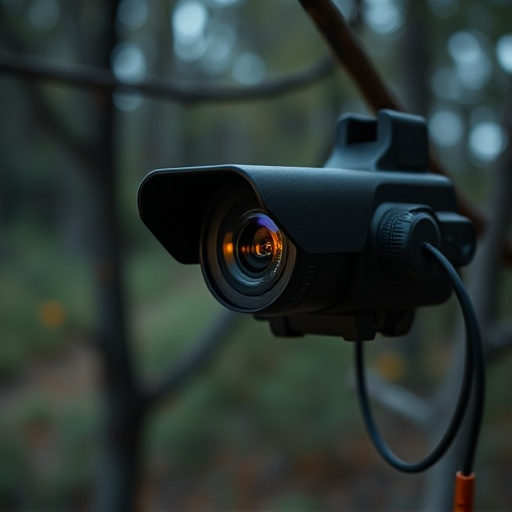Landlords installing hidden cameras (nanny cams) in rental properties must navigate privacy laws by obtaining explicit consent and avoiding private spaces like bathrooms and bedrooms. Cameras are cleverly hidden in public areas, such as behind mirrors, smoke detectors, or everyday objects, while electrical outlets and light switches also serve as strategic hiding spots. Open communication with tenants about surveillance is key to maintaining trust. By focusing on common areas, landlords can monitor properties without infringing on tenant privacy, respecting individual freedoms and fostering harmonious relationships.
Uncovering hidden surveillance spots in rental properties raises important legal and ethical questions, especially regarding privacy rights. This article explores the less-obvious locations where tenants may install nanny cams, delving into the legal considerations and privacy laws that govern these practices. We’ll uncover common hidden spots, examine the ethical implications, and offer best practices for responsible surveillance in rental settings. Understanding where to hide nanny cams is just one part of a complex discussion surrounding tenant privacy.
- Legal Considerations and Privacy Laws
- Common Hidden Spots in Rental Properties
- Ethical Implications and Best Practices
Legal Considerations and Privacy Laws
In many jurisdictions, the placement and use of hidden cameras or “nanny cams” in rental properties are subject to strict legal considerations and privacy laws. Before installing any surveillance devices, it’s crucial to understand these regulations to ensure compliance. The primary concern revolves around the right to privacy, which is a fundamental legal principle protected by various national and international laws.
These laws typically dictate that any surveillance equipment must be used responsibly and with the consent of all parties involved. In residential settings, this means obtaining explicit permission from tenants or homeowners. Additionally, cameras should not be placed in areas where there’s a reasonable expectation of privacy, such as bathrooms or private bedrooms. Knowing where to hide nanny cams while adhering to these legal constraints is essential for landlords and property managers to maintain a harmonious relationship with their tenants.
Common Hidden Spots in Rental Properties
In rental properties, nanny cams or hidden surveillance devices often find their way into seemingly innocuous locations. One common spot is behind decorative mirrors, especially in bathrooms or bedrooms. Their sleek design can conceal a camera while providing a clear view. Another tactic involves using smoke detectors or thermal cameras; these can be mounted high on walls or ceilings to capture footage without drawing attention. Even everyday objects like artificial plants or bookends with hidden compartments are favored by those looking to spy. In addition, electrical outlets and light switches offer convenient hiding places for small, camera-equipped devices, making it easier to monitor areas without raising suspicion.
Ethical Implications and Best Practices
The installation of hidden surveillance devices, commonly known as nanny cams, in rental properties raises significant ethical concerns. While their primary purpose is to ensure safety and monitor caregiving, their secretive nature can infringe on privacy rights. Tenants have a reasonable expectation of privacy in their homes, and placing these cameras without consent is legally questionable. It’s essential for property owners and managers to understand the legal boundaries and respect individual freedoms.
To maintain ethical standards, best practices suggest open communication with tenants about surveillance measures. Disclosing the presence of nanny cams and stating their purpose can help gain trust and avoid legal complications. Additionally, limiting camera placement to common areas or areas accessible to all residents is a practical solution. This approach balances the need for monitoring with respect for tenant privacy, ensuring a harmonious relationship between property owners and their occupants.
While the placement of nanny cams, or any form of secret surveillance, raises significant ethical and legal questions, understanding common hidden spots in rental properties is essential for both landlords and tenants. Knowing where to hide nanny cams must be balanced with respect for privacy and adherence to stringent legal considerations. In light of these complexities, it’s crucial to adopt best practices that prioritize transparency and fairness, ensuring the safety and comfort of all occupants without infringing upon individual privacy rights.
